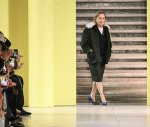You are here
A cultural revolution or renovation in Amman?
Mar 07,2019 - Last updated at Mar 07,2019
At the heart of every cultural revolution there is always a sociopolitical agenda and an ideology that either resists or preserves. Does Amman have either? And what are the major obstacles facing it?
Undoubtedly, the cultural scene in Amman is not the same anymore. It is significantly developing. This is evident through the abundant opening of art galleries, more bookshops, underground alternative music scene and jazz festivals, street art and graffiti, the scattered study rooms around the city, art spaces and art cafés, the opening of libraries and theatres, national and international short-film weeks, growing numbers of multilingual radio stations, diverse dances classes, increasing numbers of bars and pubs, more motorists on the streets, the collective interest of diverse sports across a large group of age and gender, various workshops and cultural communities, environmental awareness as we witness more hybrid cars, recycling and people going green, writing groups, facilitating technological advancements, rising entrepreneurial initiatives, an unprecedented interest in yoga and hiking as well as artificial and emotional intelligence. But most importantly, there is a significant, developing awareness and consciousness of constituent subject matters, like abortion, drugs, rape, nationality and citizenship.
Having said this, it has to be stated that the aforementioned indicators of a cultural renovation are not inclusive of all classes and segments of society. The cultural scene in Amman is prevailingly bourgeois. The city, surely, lacks representation. Undoubtedly, the city of Amman is divided into east and west, a state in-between which the so-called middle class is almost non-existent. This is largely manifested in the cultural indicators above, too. The city of Amman lacks identity. The result of this is twofold. One: It is this very lack of identity that grants it resilience to create, innovate, adapt and accommodate the rapid changes it undergoes. Two: It is this lack of identity that pushes it towards the dangers of mimicry. This results in the absence of newness and diversity, and slows the growth of whatever shape this turnaround is taking.
The cultural scene in Amman lacks political purpose, and thus the gap between the cultural projects and societal needs, between self and community, between individuality and culture is imbalanced. What Amman needs in its thriving cultural project is a rediscovery of the past in new colours. In other words, we do not need to break from the past; but we do need a second coming where intellectual freedom from the ties of the past cannot be resourceful unless they are negotiated with present ties to accommodate future generations. For neither past nor present is efficiently functional or resourceful independently; they must be in negotiation with, as opposed to in exclusion of, one another. On the one hand, for the time being, Amman cannot afford being nomadic, with open ends and no central specificity. The predominantly pretentious neighbourhood of Luweibdeh, as an example, has deemed such theory factual. On the other, it should not be defined by exclusion. The city of Amman must represent itself as one of national significance and experience collectively, where resistance to Western capitalism and mimicry is a necessity, but also an experience where a new consciousness registers an infinity of open possibilities when conceivable.
It goes without saying that any cultural identity and scene of a city takes after the identity of its citizens. Surely, after all, culture is a mirror of society. It takes from the identity of its own people. Citizens brand and rebrand their cities. Until more segments of society are represented through and represent themselves in what we can call a cultural turnaround, the cultural scene in Amman, although moving slowly, will continue to be stagnant. The mobility of such turnaround is very much dependent on the collaboration amongst the different classes of society, the bridging of wide generational gaps between millennials and generation X, as well as the rediscovery of national elements in tandem with postmodern times.
The government should also be held responsible for recognising such growth of awareness and cultural turnaround, whereby more financial aids are in demand, more artistic spaces and primarily a cultural scene stripped from the conventional boundaries. Libraries and theatres at local universities should be public, too. The income tax should be lowered so that entry tickets to various events are affordable to all. University students should be granted discount cards to shop. Censorship on books and films should be abolished and art galleries should also exist in the eastern part of the city.
I find car valets a good metaphor for the current cultural situation in Amman. The word “valet” means a responsible gentleman. This does not necessarily apply to most car valets in Amman. Car valets is also an elitist service, whose cost lower classes cannot afford. It is a solution to a problem that should not exist and could be easily resolved by enabling car parks.
The identity of any city in the world is defined by its iconic buildings. Thus, the incomplete, unfinished skyscrapers are another analogy of the cultural scene in Amman. Most of them are still under construction since 2009. Although this last example is the result of financial shortage, it is still expressive of how Amman should not venture for what it cannot afford now.
The writer is an author at Palgrave Macmillan and an assistant professor in Post-Colonial and English Literature at the American University of Madaba, Jordan. He contributed this article to The Jordan Times

- Popular
- Rated
- Commented
Apr 08, 2025
Apr 09, 2025
Newsletter
Get top stories and blog posts emailed to you each day.











